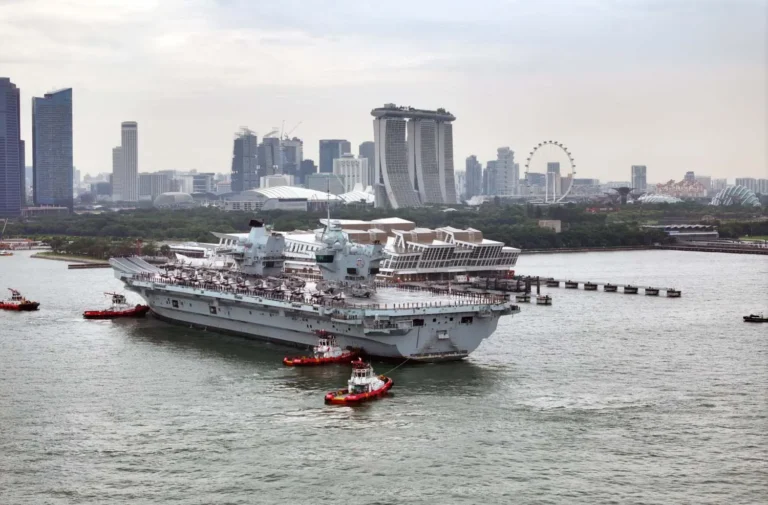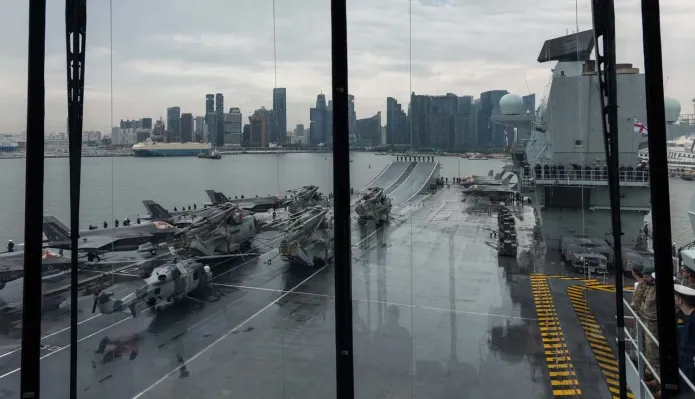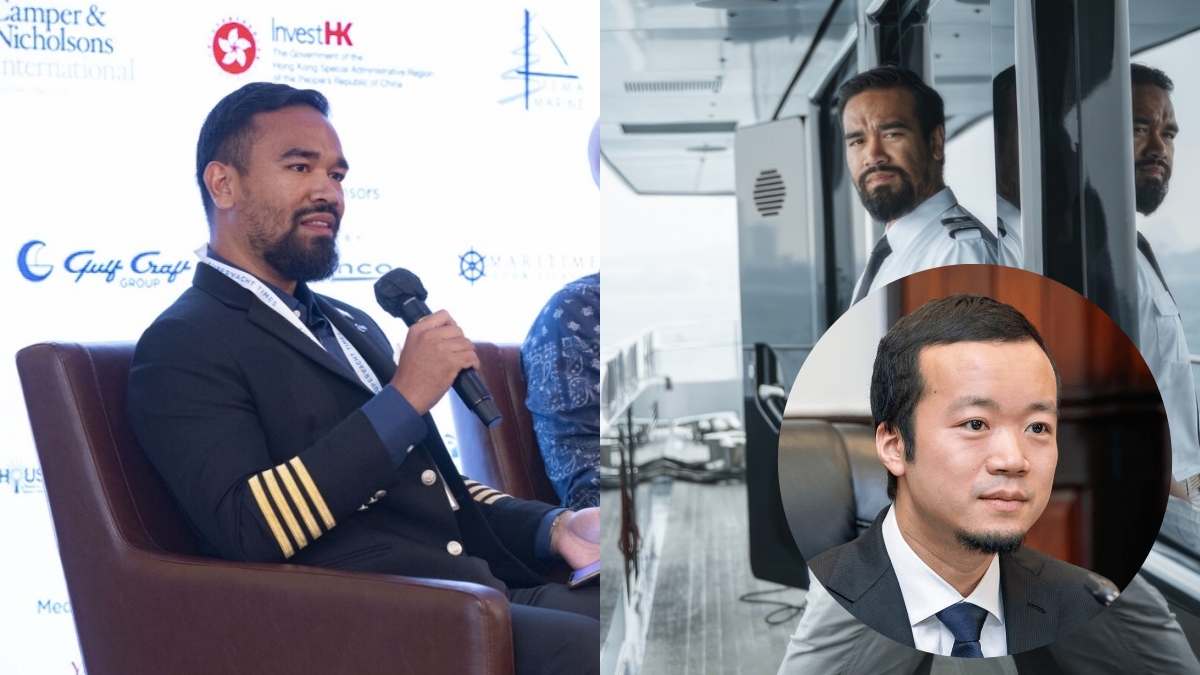HMS Prince of Wales arrives in Singapore as part of Operation Highmast 2025
The Royal Navy aircraft carrier HMS Prince of Wales arrived in Singapore on 23 June for a high-profile stop during Operation Highmast 2025, underscoring the United Kingdom’s strategic commitment to the Indo-Pacific.

- HMS Prince of Wales arrived in Singapore on 23 June as part of Operation Highmast 2025, the UK’s largest Indo-Pacific deployment this year.
- The multinational Carrier Strike Group includes ships from Norway, New Zealand, Spain, and Canada, highlighting broad defence cooperation.
- The mission strengthens UK diplomatic and security ties in the Indo-Pacific while ensuring maritime security across vital trade routes.
The Royal Navy’s aircraft carrier HMS Prince of Wales (R-09) docked at Marina Bay Cruise Centre, Singapore, on 23 June. The port call marks a key phase in Operation Highmast 2025, the UK’s most significant Indo-Pacific deployment this year.
The vessel carries F-35B Lightning II stealth fighters and Merlin helicopters, and operates with a crew of 1,600 personnel. It leads a multinational Carrier Strike Group, reflecting the United Kingdom’s intention to strengthen alliances and reinforce maritime security in the region.

According to the UK Ministry of Defence, Operation Highmast 2025 is central to London’s “Global Britain” agenda, which aims to project influence, support freedom of navigation, and expand defence ties across the Indo-Pacific.
Carrier Strike Group composition
HMS Prince of Wales is joined by several escort vessels. These include the Type 45 destroyer HMS Dauntless (D-33), the replenishment ship RFA Tidespring (A-136), and Norway’s frigate HNoMS Roald Amundsen (F-311).
Earlier this week, the New Zealand frigate HMNZS Te Kaha (F-77) joined the formation. The ship had recently completed security patrols and counter-narcotics missions in the Indian Ocean, working in cooperation with the Royal Navy.
Meanwhile, the deployment’s multinational reach has been broadened by other participating vessels. HMS Richmond (F-239), a Type 23 frigate, and Spain’s frigate Méndez Núñez (F-104) made a port call in Jakarta. At the same time, Canada’s HMCS Ville de Québec (FFH-332) visited Kuala Lumpur.

The presence of European, North American, and Pacific partners within the operation highlights an emphasis on interoperability and defence diplomacy across diverse navies.
Public engagement in Singapore
The decision to berth HMS Prince of Wales at Marina Bay Cruise Centre instead of Changi Naval Base was deliberate. The location, in the heart of Singapore, was chosen to make the carrier more visible to the public and to commemorate 60 years of diplomatic ties between the UK and Singapore.
UK High Commissioner to Singapore, Nik Mehta, explained the rationale during a press briefing: “We could have put the carrier into Changi Naval Base, and that is what every other country does, but we wanted to do something different. We wanted to make it more accessible, more visible, and more engaging.”
Captain Will Blackett, commander of HMS Prince of Wales, said during the arrival ceremony, “The entire Carrier Strike Group is looking forward to the upcoming port visits, which are vital for advancing defence diplomacy in support of economic and strategic objectives.”
Incident involving F-35B
The deployment has not been without operational challenges. One of the carrier’s F-35B fighters was forced to make an emergency landing in India.
The aircraft diverted to Thiruvananthapuram International Airport after encountering technical difficulties. The Indian Air Force confirmed that it tracked the jet via the Integrated Air Command and Control System (IACCS) and granted immediate clearance to land.
Support was provided on the ground for inspections and repairs, and the fighter later rejoined the carrier. The incident underscored both the technical complexities of operating advanced aircraft in demanding environments and the responsiveness of regional partners.
Objectives of Operation Highmast 2025
Operation Highmast 2025 is designed to underline the UK’s defence and diplomatic presence in the Indo-Pacific. The Ministry of Defence has framed the deployment as part of broader efforts to promote international stability, safeguard critical trade routes, and support rules-based order in maritime domains.
The operation will also involve combined exercises with regional navies, aimed at improving interoperability, strengthening tactical cooperation, and enhancing crisis response capacity. Such exercises are expected to include drills on anti-submarine warfare, aerial defence, and humanitarian assistance operations.
By positioning HMS Prince of Wales and its strike group in key ports and strategic waters, London seeks to demonstrate not only naval capability but also political resolve in sustaining partnerships across the region.
Broader context of UK presence in the region
This deployment follows earlier Royal Navy operations in the Indo-Pacific, including HMS Queen Elizabeth’s extensive tour in 2021. With two aircraft carriers now operational, the UK has more flexibility to maintain a presence far from home waters.
According to analysts, the choice to bring HMS Prince of Wales to Singapore reflects both historical ties and Singapore’s role as a logistics hub in Southeast Asia. The deployment coincides with an increased tempo of multinational naval exercises across the Pacific, where regional security issues, including tensions in the South China Sea, remain prominent.
The UK government has stressed that its approach is cooperative, focusing on supporting allies such as Australia, Japan, and Singapore while working alongside NATO and European partners who are extending their own naval commitments to the region.
Looking ahead
HMS Prince of Wales and its accompanying vessels are scheduled to continue their mission over the coming weeks with port calls, naval exercises, and joint training events.
According to the Ministry of Defence, future stops are expected to involve both practical cooperation and symbolic engagement, reinforcing the UK’s enduring commitment to collective security and open sea lanes in the Indo-Pacific.
Operation Highmast 2025 is projected to last several months, during which the strike group will cover thousands of nautical miles and interact with multiple regional navies.








0 Comments